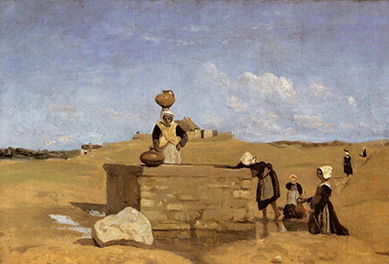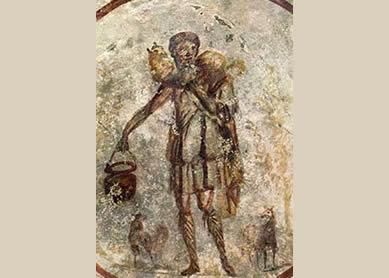Milk and honey are both familiar food items that we still eat today, and for most Europeans and Americans they are very ordinary and common components of modern diet. However, for the ancient Israelites milk and honey held very different roles within their diet. Bee honey was very desirable but not eaten regularly. Milk, on the other hand, was a central part of everyday food, yet it required considerable labor to procure and process. As a result, milk and honey were also strongly symbolic in biblical texts.
Did Israelites really eat milk and honey?
In ancient Israel, milk was mainly procured from herds of sheep and goats rather than from cattle, which were primarily used for ploughing. Sheep and goat bones are found in abundance across excavations showing that the majority of ancient Israelites depended on these animals for their milk, wool, and dung for fueling fires and ovens. Milk could be processed into other products like cheese and butter (Gen 18:18; Deut 32:14; 1Sam 17:18; 2Sam 17:29; Job 10:10, Job 20:17). In fact, butter churns have been found from the Chalcolithic period (ca. 3500 BCE), and we also have iconographic representations of milking activities from Mesopotamia (ca. 2900-2350 BCE). This processing, usually carried out by women in the home, meant milk was preserved for longer. Dairy products provided significant quantities of calories in the form of fat, protein, and carbohydrates, in addition to important nutrients like vitamins D, B, and calcium. Prov 27:23-27 offers a wonderful insight into the importance that the flocks had for providing milk and clothing for household members. Dairy products are frequently offered to guests in biblical stories, showing how dairy products could make outsiders feel welcomed into the household (Gen 18:8; Judg 4:19, Judg 5:25; 2Sam 17:29; 1Sam 17:17-18).
In the archaeological record, many beehives have been excavated at an Iron Age settlement called Tel Rehov, in the Bet She’an Valley of Israel. Although biblical texts do not mention bee keeping, it would seem that the techniques were known to the Israelites, just as they were in ancient Egypt and other ancient Near Eastern cultures. In biblical texts, honey is found in beehives in rocks (Deut 32:13; Ps 81:16), logs (1Sam 14:25-29), and even in the carcass of a lion (Judg 14:8-18). We also see in some texts that honey is used to describe God’s words, thus equating the high status of honey with the status of divine teachings (Ps 19:9-10, Ps 119:103). In wisdom texts, honey is often used metaphorically to describe the benefit of wisdom, just as honey is beneficial to the body (Prov 16:23-24, Prov 24:13-14). God provides the prophet Ezekiel with a honey-tasting scroll to eat, so that he can go out and speak God’s message to the people (Ezek 3:1-3). Heaven-sent manna, which tastes of honey (Exod 16:31), is provided for the Israelites in the wilderness, and God also feeds his bride Israel with honey in Ezek 16:13. As these biblical texts indicate, honey was symbolically and metaphorically associated with God. Honey is a food that God feeds to his people, and its elevated status makes it apt for describing God’s words and wisdom. Bee honey’s association with God and his word is also indicated by the female prophet Deborah (Judg 4:4): her name literally means “bee.” Honey was likely regarded very highly given its strong association with God and, as biblical texts depict, its nature as a chance but bountiful find in the wild.
Why is milk and honey used to describe the promised land?
At first, it seems to most modern readers that milk and honey are not the most obvious choices of foods to describe the promised land. However, as a pair, the two contrasting food items evoke a single idea. They are the two extremes of food: milk was the basic but necessary food everyone could rely on from their flocks, while honey was an incredibly sweet food that was associated with divine words and wisdom. The two together represent the single idea of all food ranging from the everyday to the divine, the bare necessities to the highly desirable. Effectively, a land that is described as “flowing,” or that “bursts forth,” with milk and honey is one that contains an abundance of all foods.




